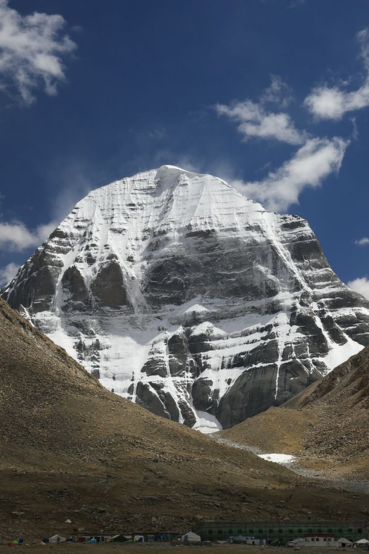Nepal, a nation rich in tradition, culture, and religious faith, has some of the world's most colorful and meaningful festivals. One such festival is the beautiful and historically significant Rato Machindranath Jatra, which honors Machindranath, the god of rain, the God of fertility, and the God of prosperity. This year, the Rato Machindranath Jatra will start on the 29th of Baisakh, 2082 (May 11, 2025).
This great festival, its procession of chariots, brilliant displays of religious significance, and general harmony, are an integral part of Nepal's cultural and religious scene, especially of the Kathmandu Valley.

The History and Mythological Significance
The Rato Machindranath Jatra tradition also finds its origin in ancient religious rituals, beliefs of the Newar tradition, and Nepalese folklore. The festival is dedicated to Machindranath, a deity who is widely followed among the Newar community of the Kathmandu Valley.
Machindranath has been worshipped as the rain god, a deity that renders fertility to the land and an abundant harvest. His image as a lord of rain and prosperity has been so deeply a part of Nepali agriculture and culture that it is an unavoidable figure for good rains to become crucial to the country's predominantly agrarian population.

The reason behind Machindranath's worship is of strong bond with nature. According to one tradition, during the period of the most severe drought, the valley people prayed to the gods to ease their distress. It was Machindranath who answered their prayers by showering rain to quench the earth and nourish the crops.
To show their appreciation, the people decided to worship the god, and rituals were created, one of which is a procession in his name. This was the beginning of what would eventually turn out to be the great Rato Machindranath Jatra.
When and Where Is the Festival Celebrated?
Rato Machindranath Jatra is celebrated in Lalitpur (Patan), a historic city in the Kathmandu Valley renowned for its cultural heritage and architectural splendor. It is celebrated annually, typically in April or May, but the dates are always associated with the Nepali lunar calendar. The festivities go on for weeks, leading up to the final chariot procession, the highlight of the entire festival.

The festival is visited by thousands of pilgrims and travelers from the entire country of Nepal, and by international tourists. The holiday is most significant to the people of Patan but has greater significance across the Kathmandu Valley, symbolizing community, faith, and agricultural traditions of the region. The narrow, busy streets of Patan, ornamented temples, and lively marketplaces are the best sites for this beautiful spectacle.
The Grand Chariot Procession
One of the most striking and revealing details of the Rato Machindranath Jatra is the chariot procession. The highlight of the festival is the enormous Rato Machindranath Rath, a wooden chariot upon which the idol of Machindranath is installed, and this is pulled along the crowded streets of Patan. The chariot itself is a huge, intricately carved, and heavily ornamented structure that illustrates not only the grandeur of the deity but also the skill of those who built it.
The procession itself, which typically begins in Patan's Pulchowk neighborhood, is a slow, stately procession through the city, with the chariot occasionally stopping at temples and shrines for prayer and benedictions.

What makes the procession even unique is the involvement of the masses in pulling the chariot. Hundreds of thousands of people collaborate and unite to pull the chariot with concerted effort, such that it moves slowly through the streets.
The labor is physically demanding since the chariot can weigh several tons, but the faithful do it with incredible devotion, chanting prayers and singing traditional songs as they make their way through the city.
The journey of the procession takes a couple of days, going from Gahabal, Mahapal, Mangal Bazar, Patan Sundhara, Lagankhel, and Jawlakhel with stops at various points in between for ceremonies, blessings, and prayer. The climax is realized when the chariot finally reaches its destination, Jawlakhel, where the idol of Machindranath ends up in the temple, thus completing the spiritual cycle.
Nariwal Khasalne: A Sacred Ritual
One of the unique and sacred rituals performed during Rato Machindranath Jatra is Nariwal Khasalne. This ritual involves the ceremonial throwing of a coconut (nariwal) from the top of the Machindranath chariot.

It is considered an act of immense religious significance and is eagerly awaited by the devotees.

A designated priest or elder climbs onto the towering chariot and tosses the coconut into the crowd. Devotees believe that catching the sacred coconut brings immense good fortune, prosperity, and blessings from Machindranath himself.

The moment the coconut is thrown, there is a sudden, excited rush among the spectators, each hoping to catch the blessed item. This lively event adds another layer of excitement and dedication to the festival, symbolizing the distribution of divine blessings to the people.
Cultural and Spiritual Rituals
Besides the physical effort of dragging the chariot, the Rato Machindranath Jatra is both sacred and culturally rich. A sequence of rituals, prayers, and oblations culminates in the procession, continuously asking blessings from Machindranath for rain, fertility, and riches.

It is also a moment when the community comes together in unison and renews its connection with the transcendental so that the valley may remain prosperous.
Newar families and others pray to the god by taking flowers, incense sticks, and other foods as offerings. They perform rituals at the various temples and sacred sites en route and sing traditional prayers and hymns while praying to invoke the blessings of the god.
Traditional Newar attire is worn by devotees during the festival, a reflection of the rich heritage of the culture, and cultural performances showcasing the art of the region, including Newar dances, drumming, and flute playing, are participated in.

To others, the festival is also a moment of reconnection with their spiritual past and commemoration of their ancestors. The festival promotes communal togetherness, with everyone, whether young or old, contributing to the celebration. It is also a period of family reunions, as individuals come together to eat meals, enjoy cultural performances, and worship their gods.
The Role of the Chariot Builders
One of the highlights of Rato Machindranath Jatra is that the chariot makers play such a significant part. These supremely skilled tradesmen, typically from lines of chariot maker families, are privileged to be working on the Rato Machindranath Rath. Chariot building is not just a spiritual task, but has more to it than mere carpentry, but great respect for the religious values of the festival.
The chariot is constructed in high gear months in advance. Master carpenters and artisans carefully plan and construct the huge wooden chariot, every single detail in hand with traditional patterns. The chariot is adorned with fine carvings of gods, goddesses, and symbols of the religious beliefs of the Newar people. The idol of Machindranath and other deities and goddesses associated with the festival are similarly cut carefully and placed on the chariot.

The building of the chariot is a family affair, with various generations of craftsmen working together in harmony. The builders also join in the ritual and festivities of the festival so that the chariot they have built carries divine blessings along with it. What they create reflects the art, religion, and cultural pride behind the festival.
Bhoto Jatra: The Grand Finale
The final act of the Rato Machindranath Jatra is the much-anticipated Bhoto Jatra, or the “Vest Festival.” It takes place in Jawlakhel, where the deity’s chariot is stationed. During this ceremony, an official dressed in traditional attire displays to the crowd a traditional jewel-studded vest believed to have divine powers.
The showing of the sacred vest is a symbol of Machindranath’s blessings and protection over the valley. The origins of the Bhoto are rooted in legend, involving a farmer who lost a valuable vest, leading to a dispute that was ultimately entrusted to the deity. To this day, the vest is publicly shown every year in a gesture of honoring that old promise.

As part of the tradition, an official holds up the vest and asks, "Yo bhoto kasko ho?" ("Whose vest is this?") from all four sides of the chariot, repeating it three times to the crowd.
Modern World Celebrations and Cultural Significance
Over the years, the Rato Machindranath Jatra has changed with society but not altered its religious and cultural significance. Although the ritual, the procession of the chariot, and the community festivity are as they have always been for centuries, new technologies have made it possible for even more people to access them.
Today, almost all devotees share photographs and videos of the festival on social media platforms, and hence, the festival is rendered accessible to everybody across the globe.

Despite all these new changes, the essence of the Rato Machindranath Jatra remains extremely traditional. The festival still brings people from all walks of life together, creating a sense of togetherness and a feeling of belonging to Nepali culture. It reminds us of the deep spiritual connection the people of the Kathmandu Valley have with their gods, their nation, and their culture.
For visitors and travelers, the festival offers a lifelong experience to see Nepalese religiosity and cultural enthusiasm at close quarters. It is a festival that brings together people from all walks of life in a common exhibition of love, bliss, and camaraderie.

The rainbow-colored chariot procession, the sparkling cultural functions, and the ancient tradition of the festival make it a not-to-be-missed tourist destination in Nepal.
Why Rato Machindranath Jatra Is So Important
The importance of the Rato Machindranath Jatra is not just religious and cultural, but also because it portrays unity, strength in numbers, and gratefulness.
It reminds the Kathmandu Valley residents about how they are related and how they are responsible together to serve the gods and care for their land. The festival also ensures that the Newar customs, which have been passed down through generations, remain vibrant so that old customs are not forgotten in an ever-changing world.

In addition, the festival has a unifying effect on the Kathmandu Valley in general. It brings together the multitudes from different villages, ethnic groups, and backgrounds under one big celebration founded on a common religion and identical practices.
It is not only a religious celebration but a celebration of cultural identity and people's pride for the citizens of Patan.
Conclusion: A Celebration of Life, Rain, and Prosperity
The Rato Machindranath Jatra is more than a festival; it is a demonstration of the enduring strength of Nepali culture, the deep spiritual connection between humans and the earth, and the devotion to the gods who nourish the community.
In its history, rituals, and vibrant celebrations, the festival continues to be a source of pride, happiness, and spiritual renewal for the people of the Kathmandu Valley.

From its modest origins in times gone by to the splendor of today's times, the festival recalls that in Nepal, life, culture, and religion blend very beautifully. Either being a local Nepali or just a visitor to the land, the Rato Machindranath Jatra is a magical window into Nepali culture and spirituality.
Photos from: onlinekhabar.com, archive.nepalitimes.com and insidehimalayas.com








